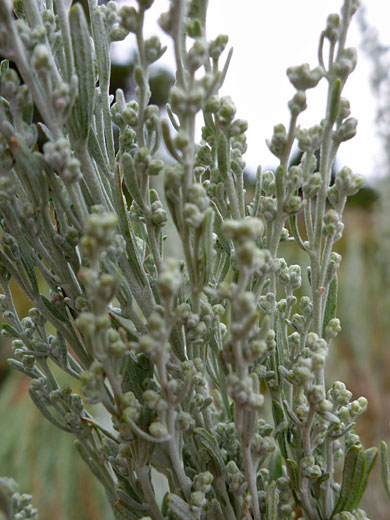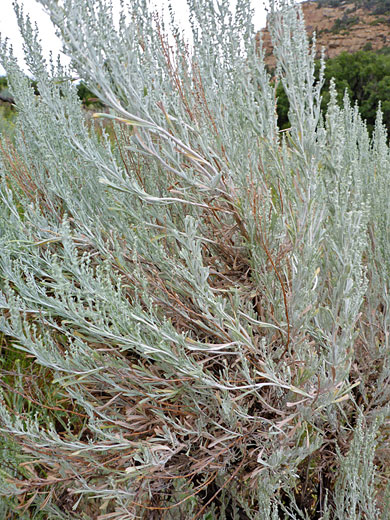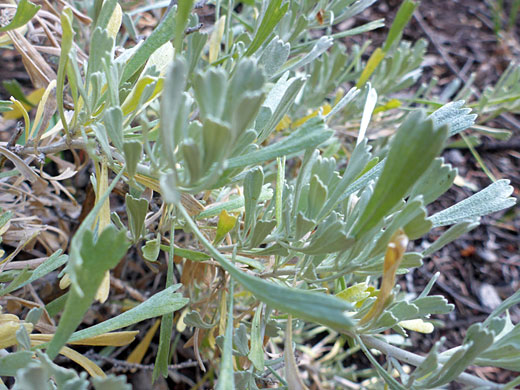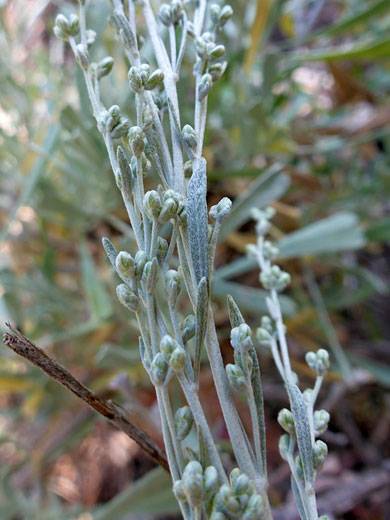Common names:
Big sagebrush, Great Basin sagebrush
Family:
Scientific name:
Artemisia tridentata
Main flower color:
Range:
The Rocky Mountain states, and all states to the west
Height:
Usually up to 7 feet; sometimes higher
Habitat:
Rocky slopes, valleys, dry plains; between 1,000 and 9,000 feet
Leaves:
Wedge-shaped, grey-green, up to 1.4 inches long, hairy, partly divided into 3 lobes
Season:
June to September
Artemisia tridentata is one of the largest sagebrush species in the West, sometimes reaching a height of 9 feet. The thick, woody, much branched stems are grey-brown in color, hairless, and older trunks have peeling, greyish bark. Leaves are quite distinctive; narrow at the base, widening to a flat top (cuneate), and are shallowly divided at the tip into three rounded lobes; the divisions are at most one third of the leaf length.
The inflorescence is a branched cluster up to 12 inches long, containing dozens of small, yellow- or cream-colored flowers, withering to orange then brown. Flowers are formed of tiny florets, numbering 3 to 8.
Four subspecies have been identified (tridentata, parishii, vaseyana, wyomingensis), differing in such aspects as height, leaf length/width ratio, involucre width and inflorescence shape. Ssp parishii is a lower elevation species, centered on the Mojave Desert, while the other three are widespread across mountains and plains at higher elevations.
The inflorescence is a branched cluster up to 12 inches long, containing dozens of small, yellow- or cream-colored flowers, withering to orange then brown. Flowers are formed of tiny florets, numbering 3 to 8.
Four subspecies have been identified (tridentata, parishii, vaseyana, wyomingensis), differing in such aspects as height, leaf length/width ratio, involucre width and inflorescence shape. Ssp parishii is a lower elevation species, centered on the Mojave Desert, while the other three are widespread across mountains and plains at higher elevations.
All Contents © Copyright The American Southwest | Comments and Questions | Contribute | Site Map





